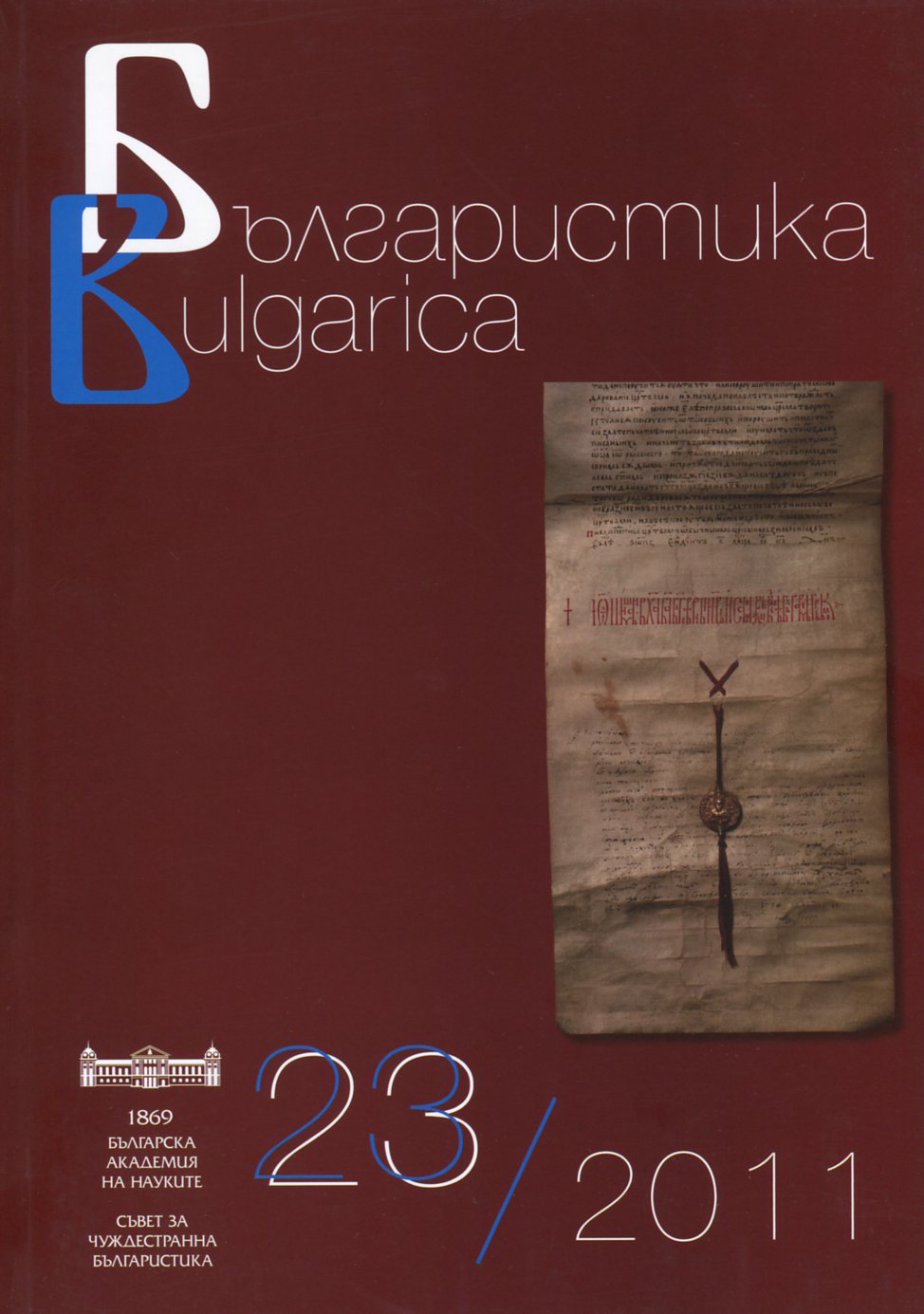
We kindly inform you that, as long as the subject affiliation of our 300.000+ articles is in progress, you might get unsufficient or no results on your third level or second level search. In this case, please broaden your search criteria.


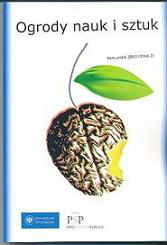
The article postulates the need of new studies of texts (which had previously been characterized as "Polish" or "mixed") produced in the fifteenth century in Silesia region, at the same time placing the problem in a European context. The author points out a number of problems posed by such old and difficult to interpret material (their linguistic specificity may have be caused by a bilingual scribe or the language used in medieval Silesia), such as the multilayered structure of the medieval text, the close relationship between Czech and Polish language systems, and difficulties in establishing the relationship between writing and phonetics, etc.
More...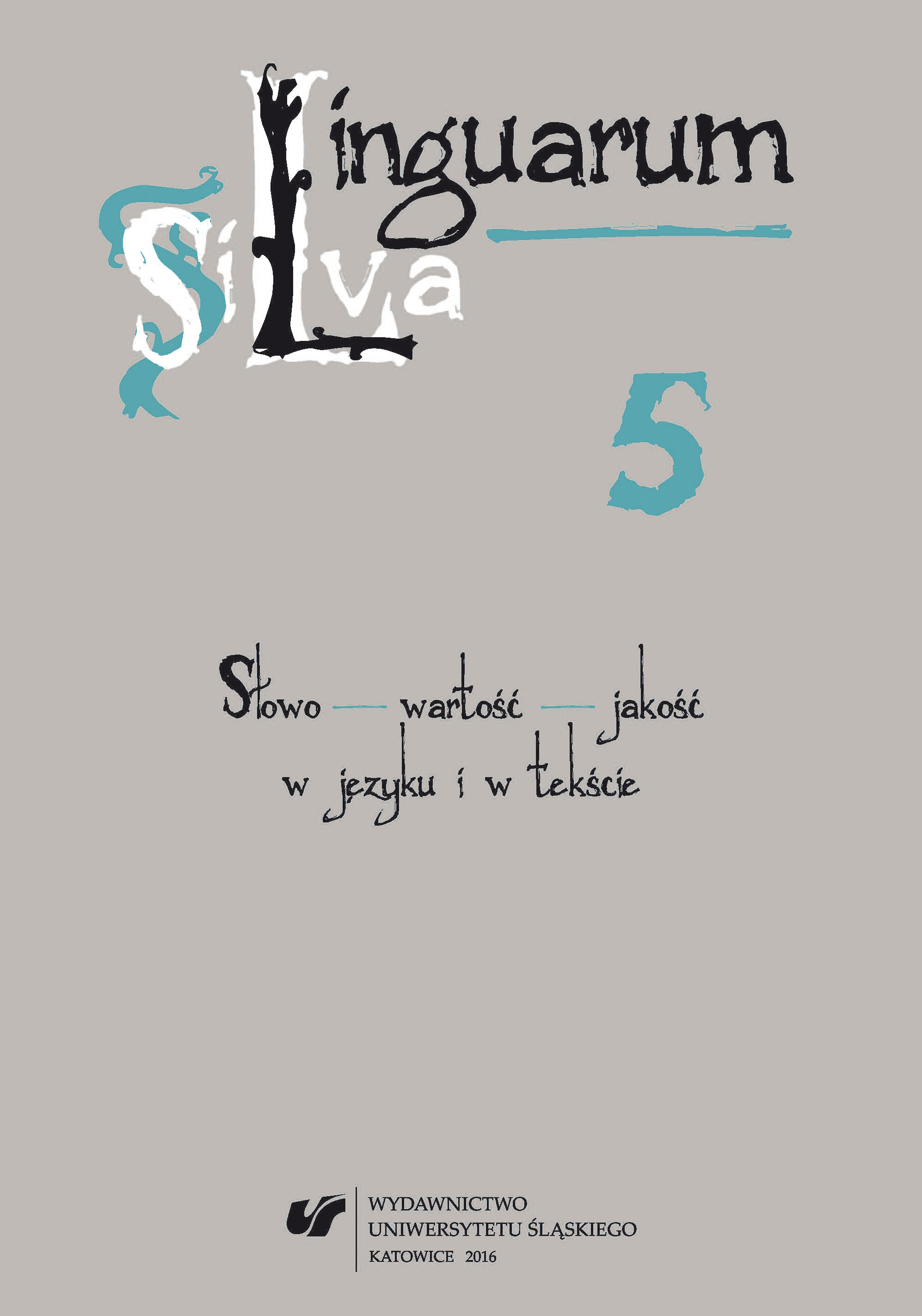
The object of the article is associated with considerations about the Old Polish lexeme chrapota, which became obsolete over the course of centuries. The introduction provides an account of the theories about the process of the obsolescence of words that were heretofore put forward. The bulk of the article presents the etymology of chrapota and its history in the various periods of the development of the Polish language. The remaining derivatives based on the root chrap‑ and the synonyms of the lexeme were also presented. The summary presents the reasons why chrapota was removed from the lexicon.
More...
The aim of the article is to present a comprehensive lexicological description of the adjective newralgiczny with special reference to the semantic and pragmatic problems which are associated with it. During the course of the discussion the author inter alia shed light on the question of the most likely etymology of this word (from the Fr. nevralgique, an artificial word-building compound consisting of assimilated Greek formants), determined the presumable period when the word was borrowed by the Polish language and put forward a suggestion to account for the disruption of the analogous change of the affixoid newr‑ (*neur‑) which is a part of this word. Moreover, on the basis of the lexicographical and corpus material the author analysed the catalogue of meanings which the word currently has, suggested a reconstruction of the path of derivation which is responsible for these meanings and presented the relations of the aforementioned word with the analogous lexemes in other European languages.
More...
The aim of the article is to present the linguistic exponents of the evaluation of people that were excerpted from ten 16th-century translations of the Gospel into Polish. The material base is constituted by the transcriptions of texts which are available on the website of the project entitled “Szesnastowieczne przekłady Ewangelii” (www.ewangelie.uw.edu.pl), which was conducted at the Department of Polish Studies of the University of Warsaw. More than 150 units which were collected in the form of individual lexemes, syntactic derivatives and multiple-segment combinations of words were grouped according to the classification of values established by Jadwiga Puzynina. The author distinguished final values (and within this group moral, transcendental, feeling-related and custom-related values) and instrumental values. The author performed a semantic analysis on the selected units. The focus of research was to study the relation of synonymy and lexical variance.
More...
The article presents the way the family and its problems are presented in the religious discourse in the 21st century. The religious conferences feature both the traditional family as well as the family which faces the problems of the modern world. The article represents the trend of theolinguistic research.
More...
The article describes the vocabulary of persuasive force applied in social campaigns. Persuasion is the art of efficient convincing and publicity is supposed to persuade the recipients to take advantage of the offer that is presented to them, to change the way they used to act and to participate in a given charity action. Similarly as in the case of commercial advertising, the social broadcasts employ various words which possess a persuasive force and which influence the feelings and emotions of the recipients of the message more strongly. Such researchers as J. Caples, F.E. Hahn, J. Bralczyk and A. Awdiejew studied the persuasive vocabulary of commercial advertisements. The article indicates which words of persuasive force may be discerned most frequently in social advertisements.
More...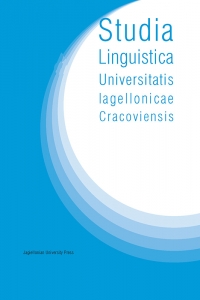
There is still no scholarly consensus about the origin of the Balto-Slavic intonations. The traditional view is that all long vowels and diphthongs receive the acute in Balto-Slavic, while short vowels and diphthongs are circumflexed. On the other hand, according to the Leiden school, the only source of the Balto-Slavic acute is the glottal stop, which is either a reflex of the PIE laryngeals, or of the following glottalized stops (traditional voiced stops) in syllables that underwent Winter’s law. We believe that the traditional view that PIE lengthened grade vowels receive the acute in Balto-Slavic can no longer be defended. It is contradicted by such examples as PIE *dhughtēr ‘daughter’ > Lith. dukth, PIE *(H)rēk-s-o-m ‘I said’ > Croat. rijêh, PIE *hōwyom ‘egg’ > Croat. jâje. It should also be taken as proved that syllables closed by laryngeals and voiced stops (or glottalics, by Winter’s law) received the acute intonation in Balto-Slavic. However, the fact that the PIE lengthened grade long vowels are circumflex in Balto-Slavic does not prove that all lenghtened grade long vowels in Balto-Slavic are circumflex. In the present paper we attempt to show that a number of Vrddhi formations, that were not inherited from PIE, received the acute in Balto-Slavic. These are the words with reflexes in both Baltic and Slavic languages, derived from PIE roots by means of Vrddhi, which remained a productive pattern of derivation during the period of Balto-Slavic unity, and probably later. Such words have the lengthened grade only in Balto-Slavic, but not in other IE languages, which shows that their Vrddhi is not inherited from PIE. This paper systematically analyzes such material in order to show that the Balto-Slavic Vrddhi formations, in contradistinction to the inherited PIE long vowels, received the acute intonation.
More...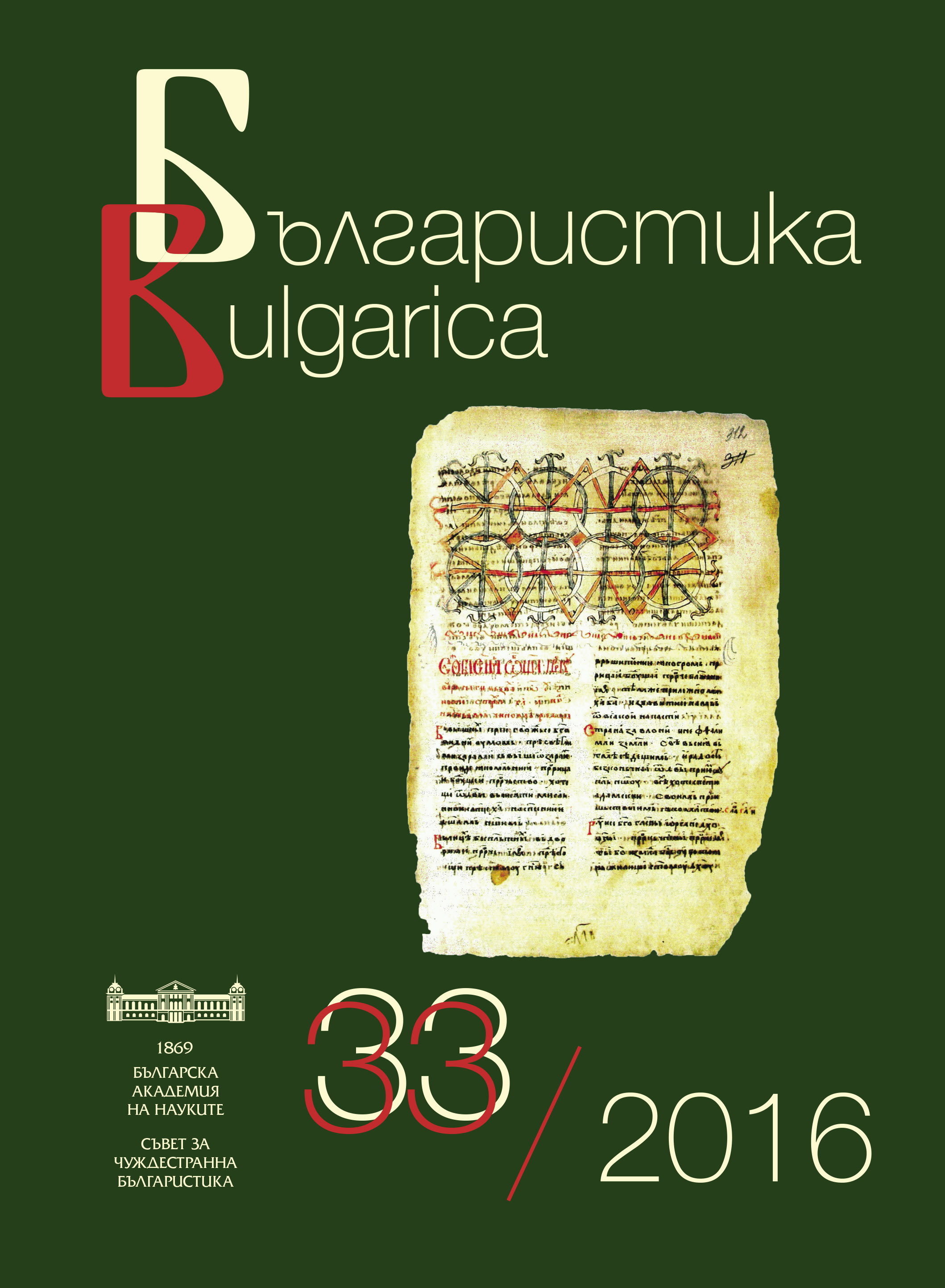
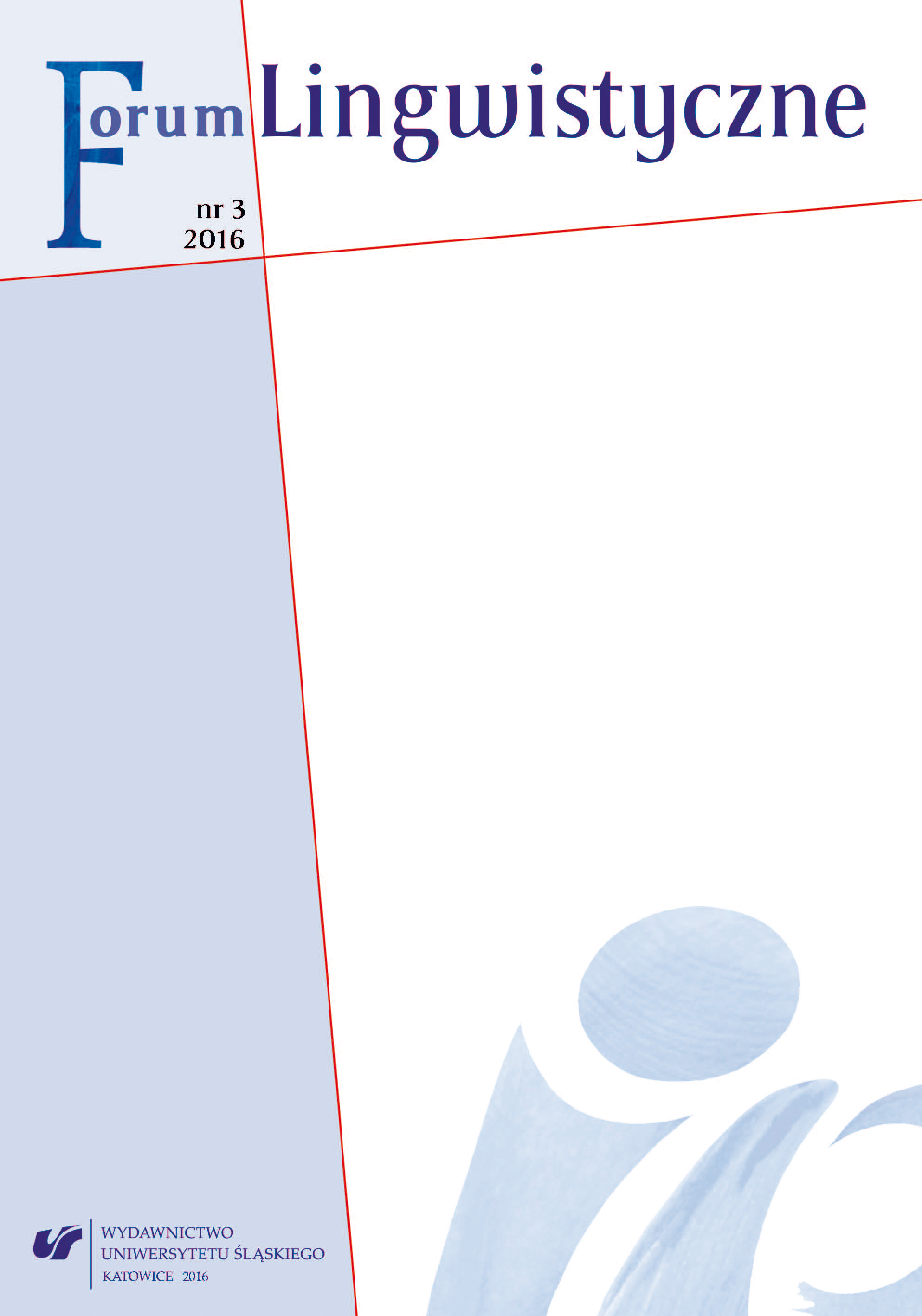
In this text Emilia Kałuzińska is trying to reconstruct socializing offer of advertising. For this purpose, she analyzes the linguistic picture of the world in the spoken texts ads shown on children’s channel. High vocabulary attendance in the field of buying and selling contributes to extract CONSUMPTION AREA, among which stands out exposing of NEWNESS, as well as LOANS that are in commercials autotelic value.
More...
The internet has seen an increase in the number of media standing in opposition to the so-called mainstream and questioning the stale state of affairs. The main tool they use to challenge the mainstream is language. To distinguish itself from traditional information providers, online alternative media use it in a highly provocative way. An example of such media is the internet radio KonteStacja. The online community of its supporters has coined a specific language, in which provocation is present in nearly all types of texts.
More...
This article attempts to offer a brief description of the overall situation in contemporary linguistics in the context of the changes taking place. Specifically, it refers to the ongoing discussions in the areias of various contemporary humanist disciplines on the subject of the achievements of structuralism and is future prospects in studies on language. The main theses considered here are: 1. One should not speak of the decline structuralism without indicating how this term should be understood and defining the scope of the teoretical-methodological principles developed by de various structuralist schools. 2. Taking into account the general principles and methods of the description, as given in the majority of contemporary literature on the subject it may reasonably be supposed that as yet no theoretical-methodological counter-proposal has emerged which, opposing structuralism, would discard al its basic premises while at the same time protecting the autonomy of linguistics as a science. The author endeavours to show that it would be more rational to speak of a successive – and broadly enriched – stage of evolution of the idea of structuralism.
More...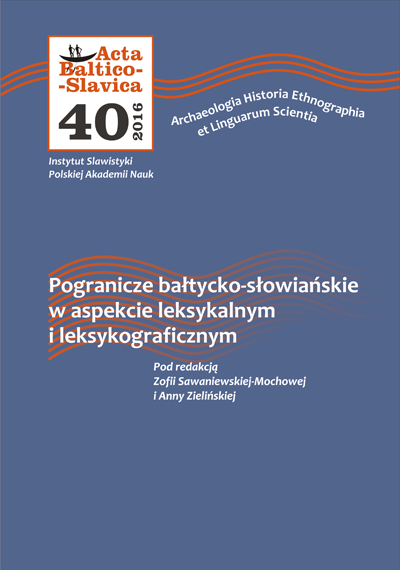
The Old Believers in Poland are a bilingual community. They use two languages: Russian dialect and Polish language. Polish influence on the Old Believers’ dialect increased after two World Wars, when they became separated from their co-religionists in other countries and had more often contacts with Polish neighbours. Their language situation may be characterized as diglossia – they choose one of their languages depending on the domain of life and other social conditions. The medical terminology is a specific part of the Old Believers’ dialect. There are a lot of borrowings from Polish language caused by the need of protection of health and life in Poland, where the Old Believers met first of all with Polish health care system. The article is an attempt to characterize the influence of Polish language in the lexis describing medicine and health care.
More...
The subject of the article is the analysis of the meaning and collocations of the adjective czerwony ‘red – Communist, Soviet’ in the Polish-language press published in Soviet Ukraine in the 1920s and 1930s. The press was primarily to function as a tool for the Sovietisation of the Polish minority, thus the periodical press was directly dependent on state publication policies. The research was conducted on a textual sample encompassing a selection of issues of 36 Polish-language press titles, diversified in terms of their scope, target group, and subject matter. The lexeme czerwony is characterised by a very high textual frequency, a few times higher than in the case of adjectives denoting other colours; thus, there are over 770 examples of the word czerwony, while the next in line are biały ‘white’ – 135 and czarny ‘black’ – 110. The frequency is definitely increased by the fact that the adjective czerwony also constitutes part of various newly-formed proper nouns.
More...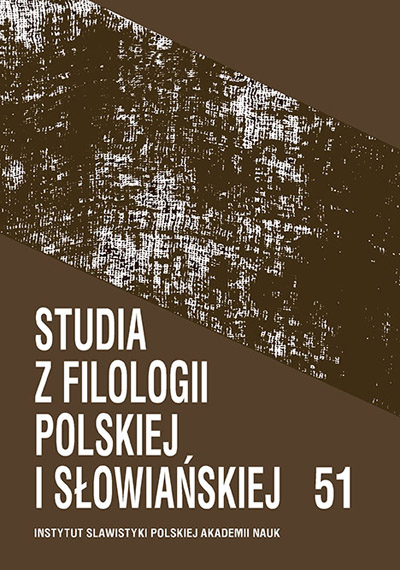
The paper deals with the so-called un ou deux phonèmes? problem in Modern Polish. The framework adopted by the author is the theory and methodology of Axiomatic Functionalism, i.e., a functional semiotic approach developed by Jan W. F. Mulder in association with Sándor G. J. Hervey which is mainly based on linguistic ideas of André Martinet. The analysis focuses on the phonological interpretation of sequences of palatalized labials and [j], nasal diphthongs, and affricates in Polish. The author argues that nasal diphthongs and palatal and retroflex affricates should be interpreted monophonematically, whereas it is both adequate and economical to interpret sequences of palatalized labials and [j] and alveolar affricates as realizations of sequences of two separate phonemes.
More...
This article deals with a particular type of simple sentences with a complex predicate which includes the demonstrative pronoun Pol. to / Russ. это ‘this.’ The author presents the view, prevailing in the linguistic literature, that in terms of syntactic structure, such units perform the role of the so-called copula. The analysis of linguistic material of modern Russian and Polish (taking into account the category of functional syntax) leads to the conclusion that such instances are in fact cases of subject duplication, which is used to emphasise the subject in spoken language.
More...
The article is a review of Beata Jarosz’s book about the linguistic image of the wedding, entitled Językowy obraz ŚLUBU, Wydawnictwo UMCS, Lublin 2014, 266 pp.
More...
Review of Ewa Golachowska’s book about the multilingualism among Belarusian Catholics at the turn of the 21st century: Jak mówić do Pana Boga? Wielojęzyczność katolików na Białorusi na przełomie XX i XXI wieku, Instytut Slawistyki PAN i Wydawnictwo Agade, Warszawa 2012, 195 pp.
More...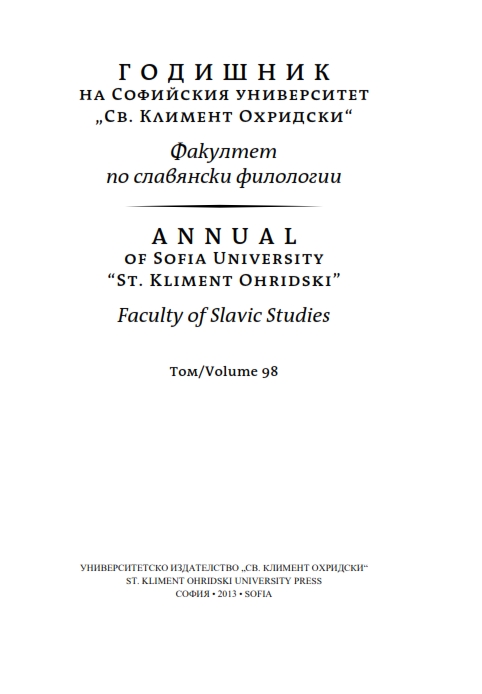
The text concentrates on the language program of the Czech National Revival. Special attention is paid to the typical for the period overlapping between the terms “language” and “people” and thus to preserved in language cultural, literary, state and emotional memory that should be revived for the future. The notion of language in this case is perceived as a concept that contains and summarizes the program of the National Revival. During the first quarter of the 19th century in Czech environment, namely language becomes a measure of the ethical and the aesthetic, of the “own” and the “foreign”, of the “high” and the “low”.
More...